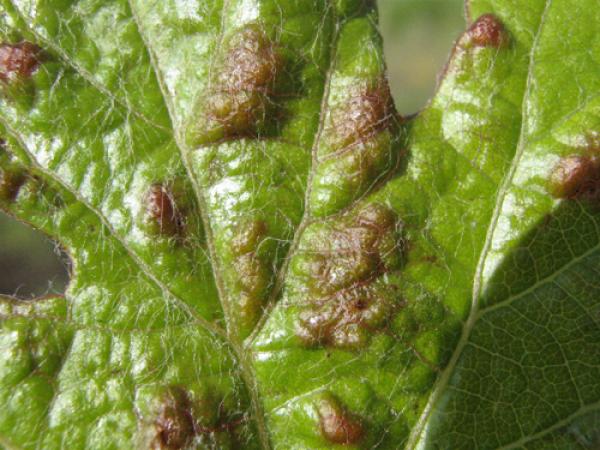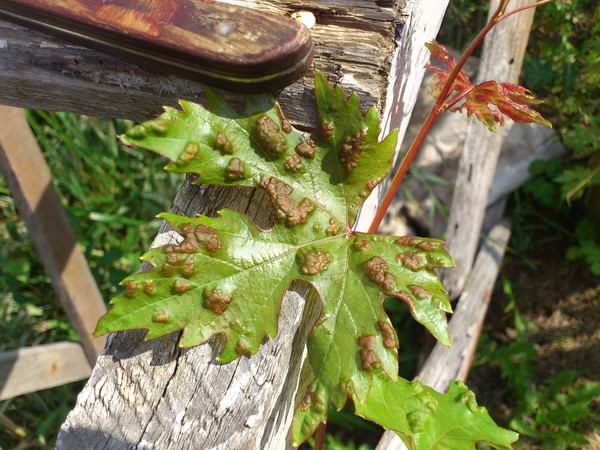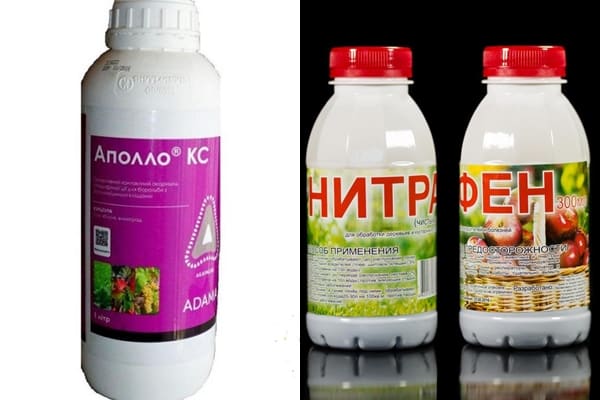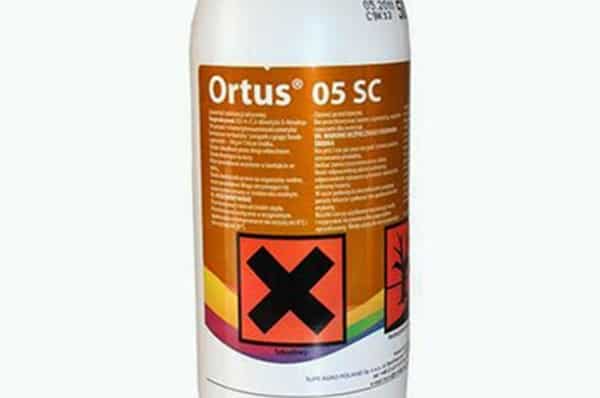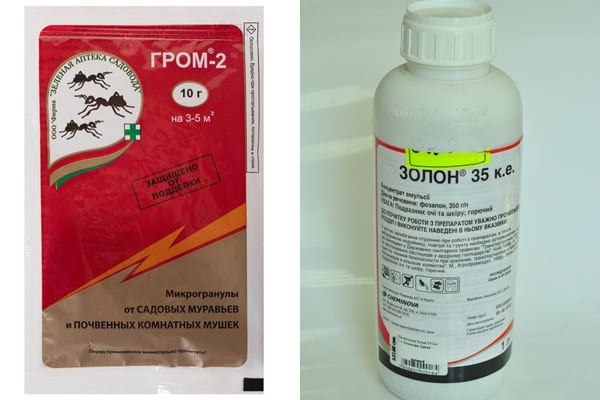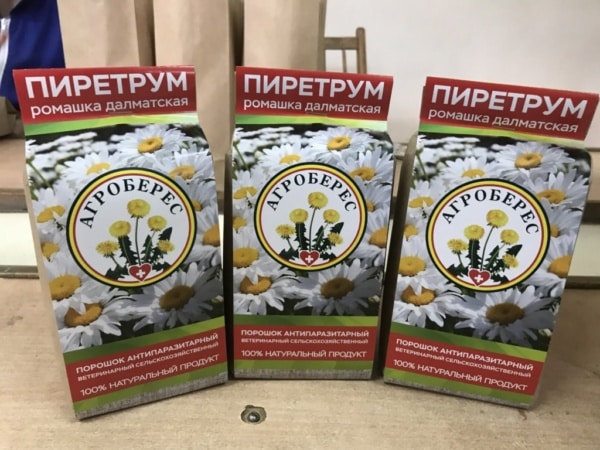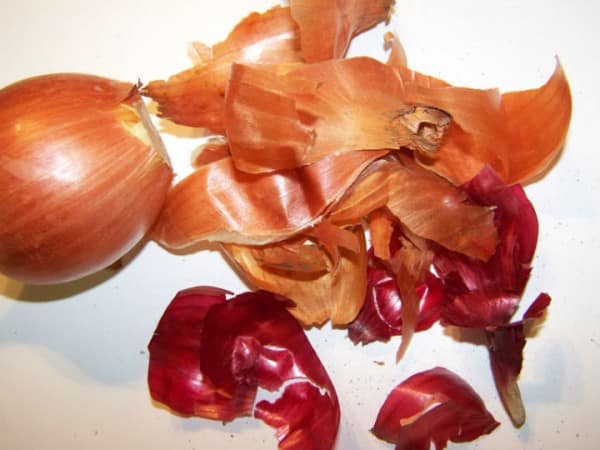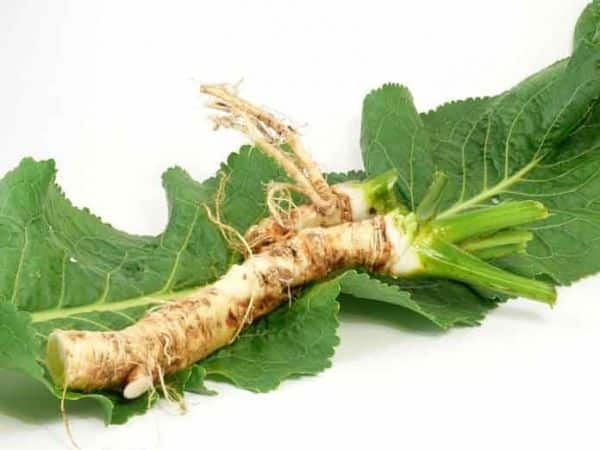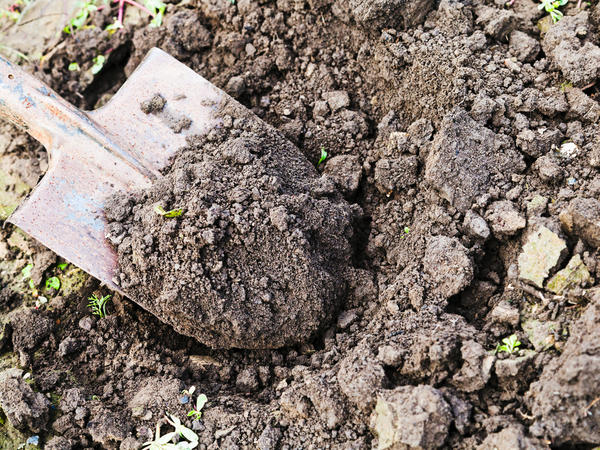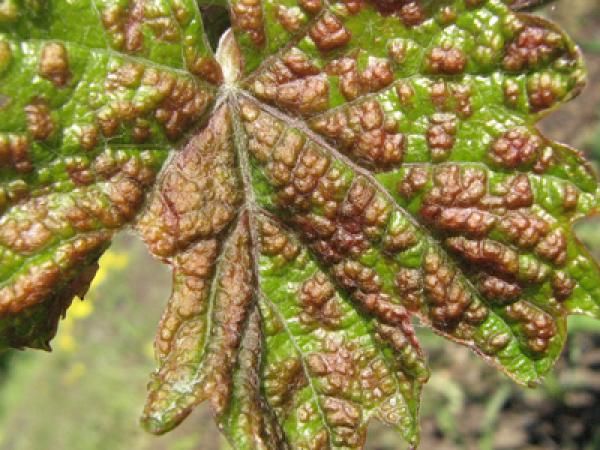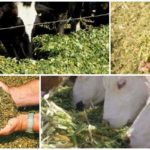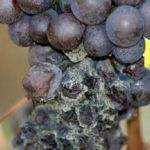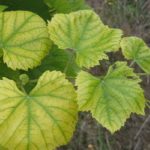Problems often arise with growing grapes; they are not only a tasty delicacy for humans, but also for many other living organisms, which sometimes cause significant harm to the plant. One of these pests is the grape mite or grape itch, which penetrates the bark or buds of the plant in winter and destroys leaves and young vines in summer.
What kind of pest is this?
The grape mite belongs to the class of arachnids, the superfamily of four-legged mites.It has the popular names itching, felt mite, spider mite, and multiplies quickly, although it does not live long.
The parasite can only be examined under a microscope. Its presence will be visible by some signs, although at first it can be confused with mildew:
- Curly leaves with burgundy tubercles.
- Young leaves are smaller.
- Starting in mid-summer, the green mass becomes gray-white.
- Yellowing or formation of necrotic spots on the leaves.
- Young shoots are stunted in growth and dry out.
A careful inspection should be carried out along the leaf veins on the inside and outside; these places are most attractive to the pest.
If females overwinter under the bark of grapes, in cracks or buds, then in the spring they begin to show their activity at a temperature of 5-10 ° C. Throughout the winter period, females and males adapt to survival without leaving offspring - such individuals are called “deutogynous.”
With the arrival of spring-summer, females lay inseminated and uninseminated eggs, which go through 4 stages of the life cycle and are called “protogynous”, actively reproducing throughout the warm season.
This type of parasite is most often transmitted with new grapes, during grafting, or carried by insects and wind. Mites climb into the bark for the winter on varieties with early ripening, and on others - into the buds.
What harm can it cause?
By sucking the juice from the leaves, mites disrupt the process of photosynthesis in them, after which the leaves begin to dry out and fall off along with the remaining unhatched eggs. If these leaves are not removed, the mite can overwinter in the soil and destroy the vineyards with greater force in the spring. Other insects or birds can carry the parasite, which increases the area of its spread.Inflorescences affected by spider mites will also turn brown and fall off.
The danger of the pest is that when it climbs into cracks under the bark for the winter, it can carry fungal spores on its belly, which quickly grow in the spring and sometimes require pruning the bush at the root.
Pest characteristics
Life expectancy is 1.5-2.5 months, during which time the female tick lays eggs up to 10 times in an amount of 20 to 300 pieces. The appearance of itching may not be immediately detectable; it is very small, from 0.1 mm to 0.2 mm, inconspicuous: milky yellow, cylindrical in shape. Its presence can be determined after the female lays eggs, which she attaches to the inside of the leaf with felt threads, forming small white spots on the bottom, and a convex brown tubercle on top of the leaf.
The larvae emerge from the eggs in 7-10 days and within 2 weeks grow into an adult that can lay eggs. Males differ in appearance from females; they are smaller in size, up to 0.14 mm.
Deformation of leaf areas occurs due to the sucking of juices by mites. From April to October, grapes that are not treated can grow 3-10 generations, from 1 mite to 27 million, spreading throughout the entire bush and destroying the plant and its harvest. Due to the sucking of juice from the grapes, the berries do not receive the necessary elements, some fall off, and in others the ripening and development of young vines is delayed.
There are several types of itching on grapes:
- Turkestan.
- Garden.
- Ordinary.
- Felt mite.
- Kidney.
The Turkestan and common species of tick can overwinter in fallen leaves or weeds. Garden and felt overwinter in the bark of grapes. Accordingly, the bud hibernates in the bud scales.
How to deal with grape mite
To effectively combat the proliferation of mites, the growing conditions of the plant must be met. Preventive control measures are also important:
- Removing affected leaves, shoots and burning them.
- In the fall, cleaning up pruned vines and fallen leaves, and burning is also recommended to prevent mites from being carried by the wind.
- Clearing the area of weeds.
- Spraying infected trees (pears, apples, plums).
It will also be effective to treat with drugs not only your own area, but also cooperation with neighbors and simultaneous treatment with them.
If a felt mite infestation does occur in a small area, many people use folk remedies. In case of severe contamination of the area, gentle and aggressive chemicals are used. To completely get rid of the parasite, it is necessary to apply a set of measures: mechanically treat the vineyards, folk and chemical remedies.
Use of chemicals
The preparations should be diluted in such a container that it is convenient to process the affected shoots and leaves. The product must penetrate and penetrate the felt coating, then the fight against the parasite will be effective.
Medicines that can be used cultivate the vineyard in spring:
- "DNOC";
- "Nitrafen";
- "Apollo"
- "Emulsion No. 30", No. 30a, No. 30c.
In summer they use:
- "Fozalon";
- "Keltan";
- "Bi-58";
- colloidal sulfur;
- "Tedion";
- "Akarin."
The entire spring-autumn period can be used:
- "Aktellik";
- colloidal sulfur;
- "Neoron";
- "Pliktran";
- "Ortus";
- "Karbofos";
- "Tiovit-Jet";
- "Omite";
- "Fufanon";
- "Thunder", "Thunder 2";
- "Fyori";
- "Vertimek";
- "Talstar";
- "Zolon";
- “Envidor;
- "Calypso";
- "Mospilan";
- "Kinmiks";
- "Bazudin";
- "Fozalon".
When treating with drugs, you need to carefully study the instructions and the correct dosage, as well as the period of time after which you need to spray. It is also important how aggressive the drug is to the surrounding plants and beneficial insects. The most aggressive are: Actellik, Vertimek, Omite, but they act on the tick faster than other drugs. The most suitable time for treatment with such drugs is the period of bud break.
Folk methods of struggle
Folk remedies are used for small infections of bushes.
Spray infusions of marigolds, onion peels, pyrethrum, calamus root, and bird cherry blossom.
An infusion of pyrethrum (Dalmatian chamomile) is included in most preparations that fight home and garden insects. Pour boiling water (150 g) over crushed pyrethrum flowers and leaves (1 cup) and leave for 2 days. Spray the plant after 5-7 days, leaves and green, woody vines. To make the infusion more effective and erode the felt threads, you can add 2 tbsp to the resulting amount of strained solution. l. alcohol, 50 g of soap solution (from laundry soap).
Infusion of marigolds (Chernobrivtsev). 100 g of fresh flowers are poured into 100 g of warm water, respectively, for 1 kg of flowers - 1 liter of water. Leave for 3 days in a dark, warm place, then filter and add 100 g of laundry soap solution. Spray the soil around the vineyard, vines, and leaves once every 10 days.
Garlic infusion. Twist 2 large heads, put them in a liter jar, pour 0.5 liters of warm water. Leave in a warm place for 5 days, spray once every 2 weeks.
Onion scale helps control small infested plantations.You will need 200 g of peels or 400 g of old onions with peels, which is poured with a bucket of hot water (8 l), left for 2 days, filtered and sprayed once every 10 days. For greater effectiveness, you can add garlic infusion and soap solution to the solution.
Infuse bird cherry flowers (100 g) in 100 g of alcohol for 5 days, strain, then add soapy water and spray the grape leaves.
Calamus root is poured with boiling water in the proportion of 100 g of calamus root powder per 1 liter of water. Leave in a dark place for 24 hours, strain and treat the diseased plant.
Dandelion, its leaves and root, finely chopped (1 kg) pour warm water (8 l). Leave in the sun for 2 days, strain, and treat the affected areas.
Decoctions of henbane, tobacco and horseradish are also used. Before using all the products, you need to put on a face mask and gloves, since many plants contain alkaloids that can have a poisonous effect not only on insects, but also on humans. Carry out the treatment in sunny, windless weather. If it rains before the repeated spraying period, then the treatment must be carried out again. Before each use, make fresh solutions, since herbs lose their properties during long-term storage.
Prevention measures
Preventive measures should begin with sanitizing the area:
- Constant cleansing of weeds and other diseased plants.
- Preventive spraying with Bi-58, Bordeaux mixture, is used in spring and autumn.
- Proper care in compliance with all agricultural practices.
- Choice for grafting healthy plant varieties.
- Digging up the soil and spraying with insecticides.
- Regular inspection of the green mass of plants.
- In spring, summer and autumn, change treatment preparations so that the parasite cannot adapt to one treatment.
- It is impossible to process when the berries are ripe, and 20 days before harvest.
- The vine should not come into contact with the soil.
Diseased leaves are removed, and spraying is carried out in sunny weather in the evening or morning, always in accordance with the instructions.
The mite is a parasite that feeds on the contents of the cells of grape leaves, which negatively affects the number of berries set and their filling with sugars and ripening. On varieties with white and yellow berries it forms yellow tubercles, on red, pink, blue - brown tubercles, and the leaf blade may begin to curl at the edges. Timely measures to combat the pest can save crops and bushes from death.


